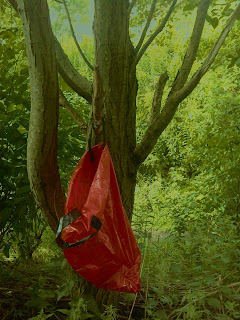
artist's studio

cast concrete, black resin, nylon, sand 2009

welded steel, fabric, pva 2007
She took the bus to Pawtucket in search of dog fur — “There are no groomers in Providence,” she claimed — and pounded the pavement collecting the sweepings from Thayer Street hair salons. Then she stuffed the hair — big, tangled clods of it — into nylon stockings, creating pendular sculptures that swing gently from the ceiling and the walls.
Salama’s show is the culmination of an independent study project on art inspired by the body. She worked with Paul Myoda, assistant professor of visual art, who helped her find artistic precedents to respond to, like the messy, organic works of Louise Bourgeois, Kiki Smith and Eva Hesse.
After many weeks of research and planning, Salama made the works all at once so there could be “a strong dialogue between them all.”
“Mostly, I just like experimenting, playing around with different things, different forms,” Salama said.
“You can plan all you like, but you never know how it’s going to turn out,” she continued.
For Salama, the show’s dominant aesthetic is the contrast between “clean and dirty.” She said she used resin to give the homely works a kind of sheen, making them more visually complex.
http://ps1.org/studio-visit/artist










